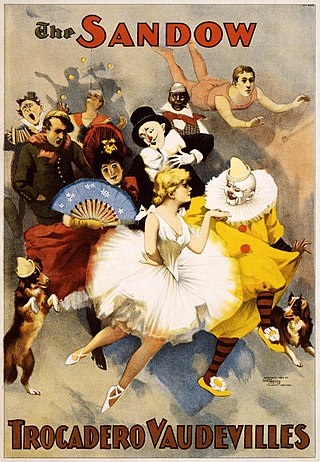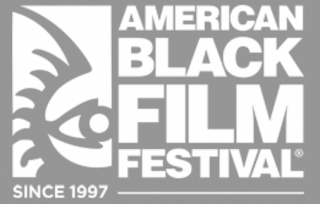Black film is a classification of film that has a broad definition relating to the film involving participation and/or representation of black people. The definition may involve the film having a black cast, a black crew, a black director, a black story, or a focus on black audiences. Academic Romi Crawford said, "I think a black film is a film work that takes into account in some way the relationship of African-Americans or blacks from the African Diaspora to filmmaking practice, means and industry. For me, it's in that relation between blacks and the film industry. How one engages in that relationship can be a mixture of black director and black acting talent; black director and black content in story; black content in story, no black director; black production money, nothing else that reads as black." [1]
Chicago Tribune 's Allan Johnson said in 2005 that the definition is blurred by black actors who star in films where their ethnicity is unrelated to their character, such as Denzel Washington, Jamie Foxx, Will Smith, and Halle Berry. Several black directors also have directed films unrelated to their ethnicity, including Antoine Fuqua, Angela Robinson, and Tim Story. [1]
The American Black Film Festival was made by marketing executive Jeff Friday, who created the criteria for a film to qualify as a best picture candidate. A film must have eight points to qualify. Four points are given for each executive producer, producer, writer, director, and lead actor and actress involved with the film. Two points are given for each supporting actor and actress. Friday acknowledged the varied possibilities of the scoring system and said part of the goal of the award ceremony was also to recognize people of color behind the camera. [1]

Vaudeville is a theatrical genre of variety entertainment which began in France at the end of the 19th century. A vaudeville was originally a comedy without psychological or moral intentions, based on a comical situation: a dramatic composition or light poetry, interspersed with songs or ballets. It became popular in the United States and Canada from the early 1880s until the early 1930s, while changing over time.
This is an overview of 1923 in film, including significant events, a list of films released and notable births and deaths.
The year 1919 in film involved some significant events.
1913 was a particularly fruitful year for film as an art form, and is often cited one of the years in the decade which contributed to the medium the most, along with 1917. The year was one where filmmakers of several countries made great artistic advancements, producing notable pioneering masterpieces such as The Student of Prague, Suspense, Atlantis, Raja Harischandra, Juve contre Fantomas, Quo Vadis?, Ingeborg Holm, The Mothering Heart, Ma l’amor mio non muore!, L’enfant de Paris and Twilight of a Woman's Soul.
The year 1909 in film involved some significant events.

Dorothy Jean Dandridge was an American actress and singer. She was the first African-American film star to be nominated for the Academy Award for Best Actress, which was for her performance in Carmen Jones (1954). Dandridge had also performed as a vocalist in venues such as the Cotton Club and the Apollo Theater. During her early career, she performed as a part of The Wonder Children, later The Dandridge Sisters, and appeared in a succession of films, usually in uncredited roles.

Cape Coloureds are a South African ethnic classification consisting primarily of persons of mixed race African, Asian and European descent.

Olga Edna Purviance was an American actress of the silent film era. She was the leading lady in many of Charlie Chaplin's early films and in a span of eight years, she appeared in over 30 films with him. Her surname was pronounced "pur-VIE-unce", as verified by Chaplin in his spoken narration of one of his films.

Crime films, in the broadest sense, is a film genre inspired by and analogous to the crime fiction literary genre. Films of this genre generally involve various aspects of crime and its detection. Stylistically, the genre may overlap and combine with many other genres, such as drama or gangster film, but also include comedy, and, in turn, is divided into many sub-genres, such as mystery, suspense or noir.

Fredericka Carolyn "Fredi" Washington was an American stage and film actress, civil rights activist, performer, and writer. Washington was of African American descent. She was one of the first Black Americans to gain recognition for film and stage work in the 1920s and 1930s.

Ethnic pornography is a genre of pornography featuring performers of specific ethnic groups, or depictions of interracial sexual activity.

Frank Alvin Silvera was a Jamaican-born American character actor and theatrical director.

Hallelujah is a 1929 American pre-Code Metro-Goldwyn-Mayer musical directed by King Vidor, and starring Daniel L. Haynes and Nina Mae McKinney.

The American Black Film Festival (ABFF), originally called the Acalpulco Black Film Festival, is an independent film festival that focuses primarily on black film and works by black members of the film industry. The festival is held annually in Miami, Florida and features films, documentaries, and web series with black writers, directors, and actors.

Madame Sul-Te-Wan was the first African-American actress to sign a film contract and be a featured performer. She was an American stage, film and television actress for over 50 years. The daughter of former slaves, she began her career in entertainment touring the East Coast with various theatrical companies and moved to California to become a member of the fledgling film community. She became known as a character actress, appeared in high-profile films such as The Birth of a Nation (1915) and Intolerance (1916), and easily navigated the transition to the sound films.

Hood film is a 1990s film genre originating in the United States, which features aspects of urban African American or Hispanic American culture. John Singleton, Mario Van Peebles, F. Gary Gray, Hughes Brothers, and Spike Lee are all directors who have created work typically classified as part of this genre. The genre has been identified as a sub-genre of the gangster film genre.

The Lincoln Motion Picture Company was an American film production company founded in 1916 by Noble Johnson and George Perry Johnson. Noble Johnson was president of the company, and the secretary was actor Clarence A. Brooks. Dr. James T. Smith was treasurer, and Dudley A. Brooks was the assistant secretary. The company is known as the first producer of race movies. Established in Omaha, Nebraska, the company relocated to Los Angeles the following year. It remained in operation until 1923, closing shortly after announcing a final project, The Heart of a Negro. The point of the creation of Lincoln's was to eliminate the stereotypical roles of "slapstick comedy" in Hollywood at the time for Black actors and actresses. "best advertised and most widely known Race Corporation in the world" is the famous slogan for the company.
Racebending was coined as a term of protest in 2009 as a response to the casting decisions for the live-action film adaptation of the television series Avatar: The Last Airbender. The starring roles of the show were coded as being of East Asian (Aang) and Inuit descent, but were played by actors of European descent in the film. The initial protests such as "Saving the World with Postage," were created in a LiveJournal online forum that initially responded to the casting decisions by "inundating Paramount with protest mail." However, the cast went unaltered and when production began, the leaders of this protest responded by founding the advocacy group and accompanying website Racebending by "playfully borrowing the concept of manipulating elements (bending) from the Avatar universe."

A gangster film or gangster movie is a film belonging to a genre that focuses on gangs and organized crime. It is a subgenre of crime film, that may involve large criminal organizations, or small gangs formed to perform a certain illegal act. The genre is differentiated from Westerns and the gangs of that genre.

African American cinema is loosely classified as films made by, for, or about Black Americans. Historically, African American films have been made with African-American casts and marketed to African-American audiences. The production team and director were sometimes also African American. More recently, Black films featuring multicultural casts aimed at multicultural audiences have also included American Blackness as an essential aspect of the storyline.